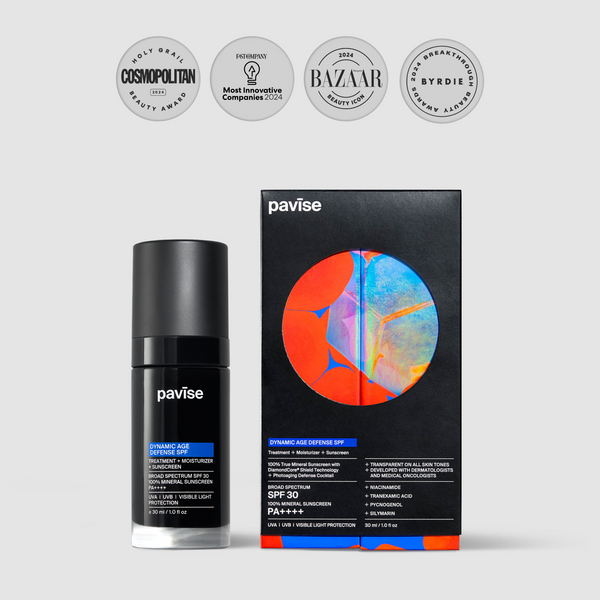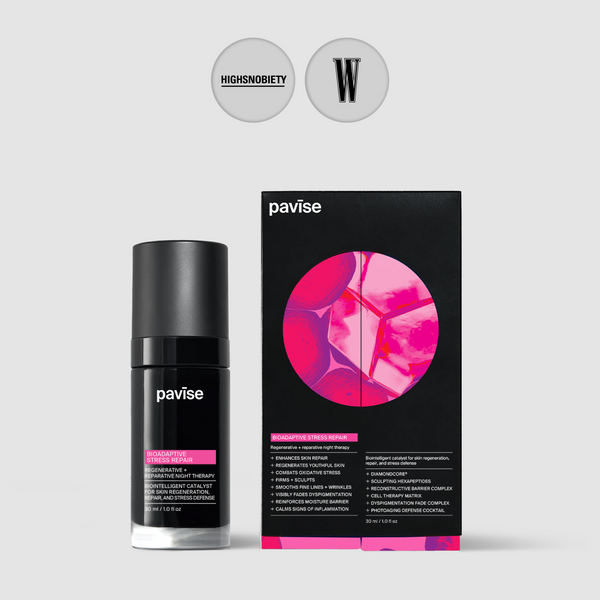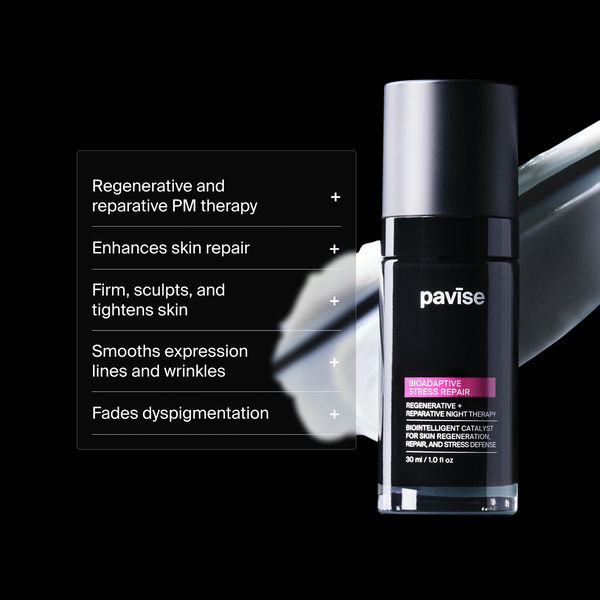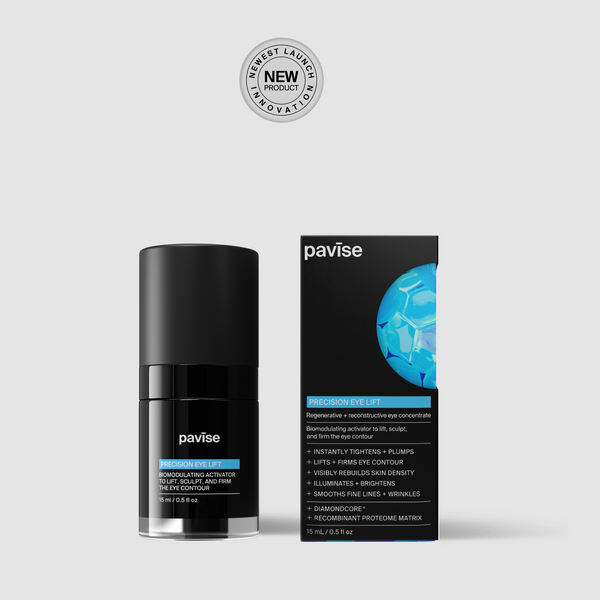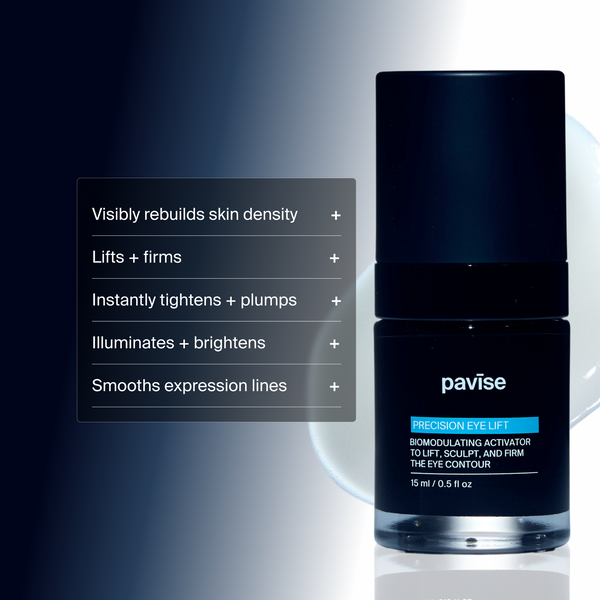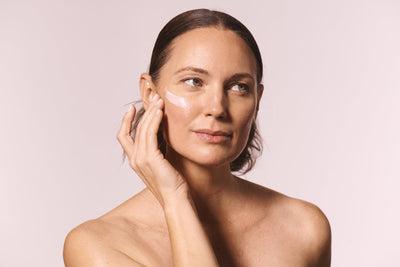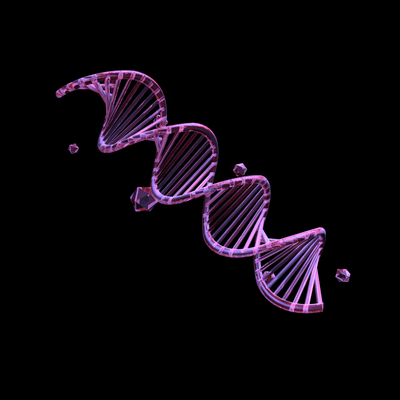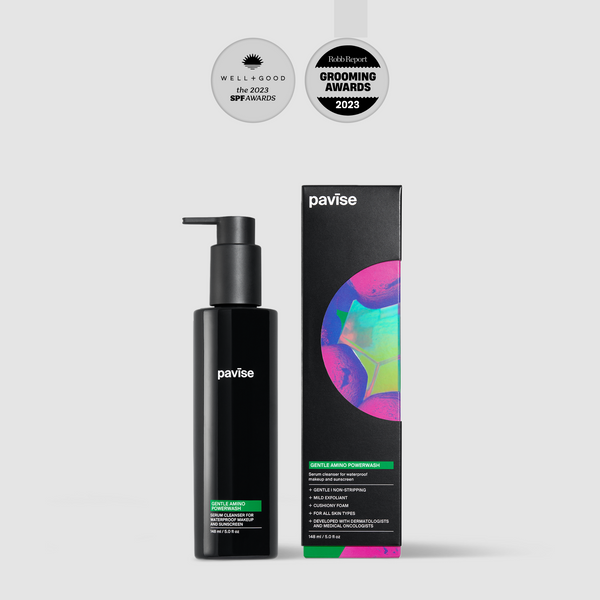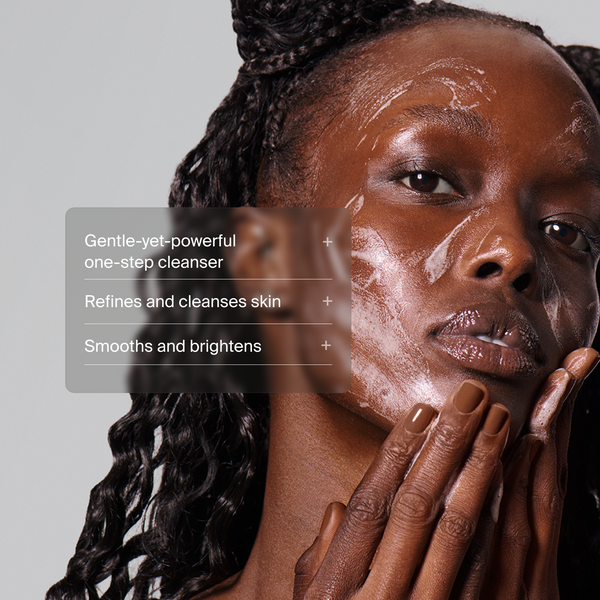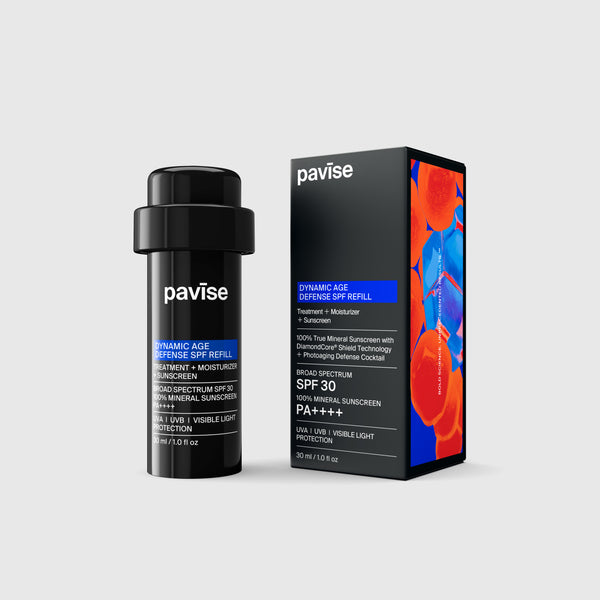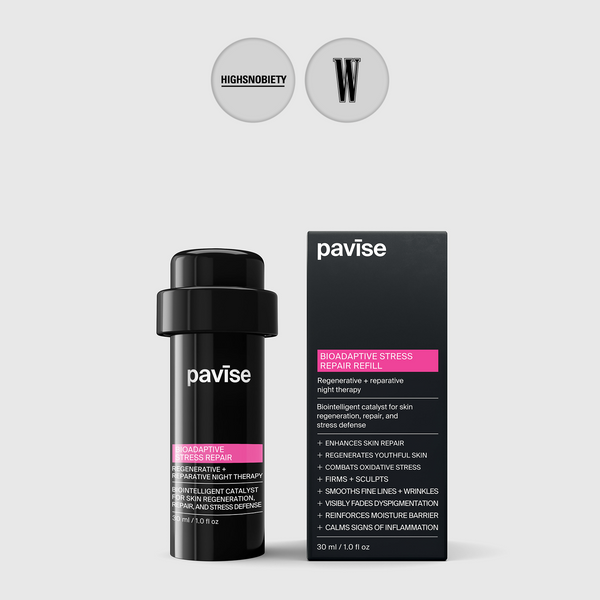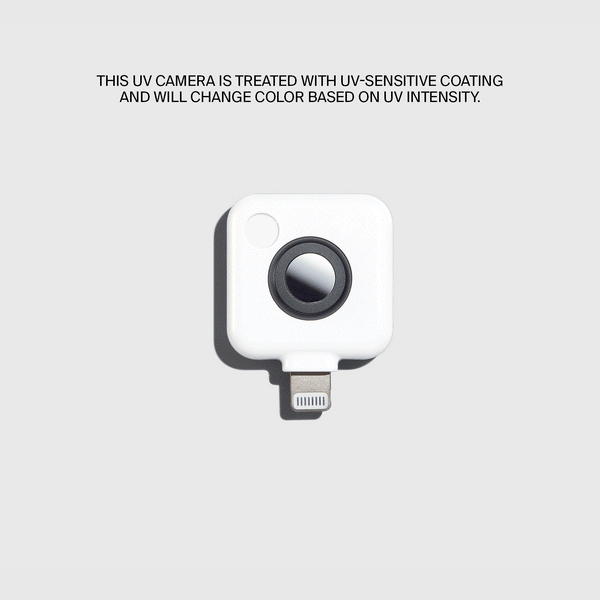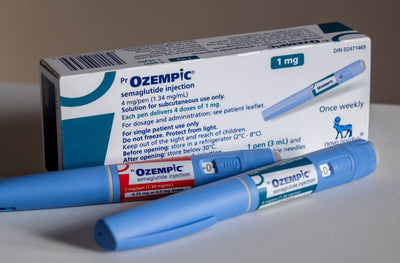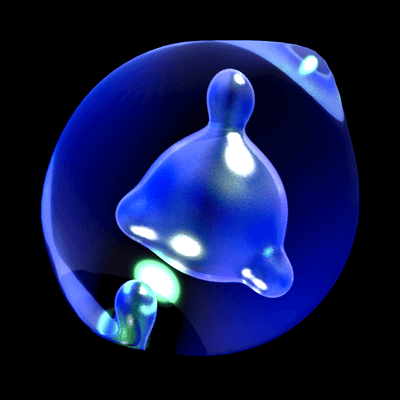HORMONAL SHIFTS AND SKIN AGING: UNDERSTANDING MENOPAUSE'S IMPACT ON THE SKIN
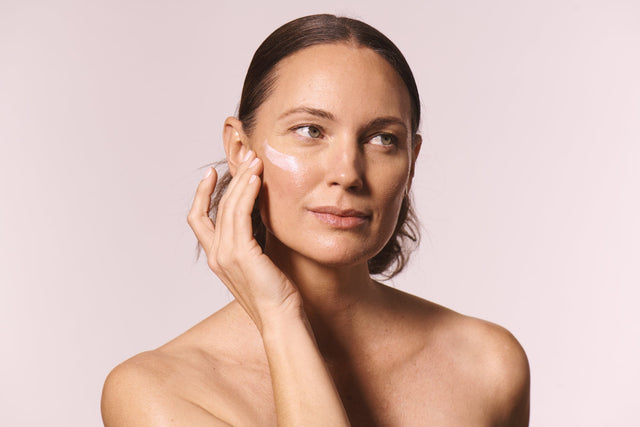
What you need to know
The hormonal shifts that occur during menopause can trigger a cascade of changes in the skin such as thinning, dryness, reduced elasticity, and slower wound healing. These symptoms are largely driven by the decline in estrogen, a hormone deeply involved in maintaining skin structure and function.
While hormone replacement therapies have shown some effectiveness, they come with notable risks. This article explores the science behind estrogen’s role in skin health and introduces a breakthrough alternative: Pavise DiamondCore® technology, a safe solution designed to restore and protect aging skin without the side effects.
What happens to our hormones during menopause?
The regulation of different hormones in our bodies is what determines how we develop and age throughout our life. One of the main hormones regulated during our lifetime is estrogen. A prevalent symptom of menopause is the rapid decline in estrogen levels, especially experienced by women around the age of 50 due to the cessation of hormone release by the ovaries1,2. Additionally, the associated hormone receptors throughout the body also stop functioning2. A lack of estrogen in the body affects multiple types of tissue functions, particularly the skin because estrogens play vital roles in the functional pathways of our dermis and epidermis1,3,4.
How does a lack of estrogen affect our skin?
The main symptoms caused by lower estrogen levels in our skin are decreased collagen levels, decreased skin thickness, reduced skin hydration, and slower wound healing1,3,4. It has been found that collagen levels decrease by 30% and skin thickness is reduced by 1.13% in the early postmenopausal years3. Due to the decrease in collagen, skin elasticity also decreases by 1.5% each year early on3.
Estrogens are extremely involved in the pathways that produce collagen because they downregulate matrixmetalloprotease-1 (MMP-1), a protein responsible for collagen degradation3. When the ovaries stop producing estrogens, MMP-1 production increases because it is no longer hindered by any estrogens. This causes more collagen to be broken down in the skin which results in skin thinning as well as decreased elasticity1.
Skin thinning is also caused by the decreased hydrophobicity in the dermis and epidermis, the inner and outer layers of our skin respectively1. The dermis has a responsibility of maintaining hydrated skin with glycosaminoglycans which are highly hydrophilic. In other words, this protein prefers to be around water, so it attracts water to the dermis. When estrogen levels are decreased, so is the glycosaminoglycan content which results in dry, wrinkly, and thin skin1. The epidermis also has a lower water holding capacity due to the lower collagen levels and extracellular matrix degradation3. This combination of lower hydrophilic proteins and an increase in water loss causes the skin to become less hydrated and inherently thinner, which leads to dryness and atrophy1.

Another major function affected by the loss of estrogen is wound healing. Wound healing involves a process that requires multiple phases many of which are affected by estrogen levels. A crucial phase of the wound healing process is the proliferative phase, the one in which cells are made to form new tissue that heals the skin barrier3. A key component to the cell proliferation process is the protein TGF-β, which is found in dermal fibroblasts (skin cells). In postmenopausal women, it has been shown that this protein is downregulated by the lack of estrogen which slows the wound healing process3. This delayed wound healing is what causes older women to heal slower and bruise more easily.
What are some existing solutions?
All of these symptoms have one thing in common: estrogen, so it is not surprising that attempts have been made to reverse the symptoms with estrogen treatment. A common treatment for menopause that has been used in the past is hormone replacement therapy (HRT), which has proven to be effective by increasing collagen levels and skin thickness as well as skin hydration in postmenopausal women3. While this treatment is effective for reversing the symptoms of aging skin, it has had some negative side effects such as hyperpigmentation and increased risk of breast and uterine cancer3,4.
The first difficulty in this process is the estrogen levels used during the treatment. If they are too high or too low, the treatment can either do nothing or even worsen the condition4. This means that the treatment must be consistent and precise, which can be difficult to do.
Elevated levels of estrogen have also been found to cause hyperpigmentation in the skin. Hyperpigmentation is caused by the production of melanocytes, which are cells that produce the pigment, melanin. Estrogen receptors have been found in these cells, demonstrating that a pathway exists in which estrogens regulate melanocyte production, inherently causing hyperpigmentation in the face3. This is why treatments with estrogen such as HRT have the possibility of causing hyperpigmentation.
Finally, there is the risk of breast and uterine cancer caused by unopposed excess estrogen1,3. There are estrogen receptors present in many different types of cells, and the pathways involving estrogen concentration are specific and complex. Treating the body with additional hormones can have an effect on processes that increase cancer risk. The risk can be reduced as long as the treatment process is controlled and consistent, but it is still a risk, nonetheless.
Pavise DiamondCore® Technology
With these risks in mind, researchers have been trying to find a solution to skin aging caused by menopause that is not a hormonal solution. Our preferred solution is the Pavise DiamondCore® technology which has been proven to enhance collagen production as well as improve wound healing5.
The DiamondCore® molecule (ND-ZnO) is constructed of a nanodiamond core that is surrounded by zinc oxide molecules to form uniform crystallites which improve the mechanical properties of zinc oxide. Studies have shown that ND-ZnO both prevents and reverses collagen degradation due to this improved structure. In comparison to existing treatments to improve collagen synthesis, collagen production increased by 70% with the treatment of ND-ZnO5. In addition to enhanced collagen synthesis, wound healing was also significantly improved with the use of ND-ZnO. As stated earlier, an important phase of the wound healing process is the ability for skin cells to proliferate and migrate to form new tissue. It was found that wounds treated with ND-ZnO experienced a cell proliferation rate twice that of other healing treatments5.

The use of DiamondCore® as a treatment for postmenopausal skin aging is the preferred method not only because it is a better treatment for the reversal of aging symptoms, but also because it has no side effects. Unlike traditional hormone-based therapies, DiamondCore® targets the underlying mechanisms of skin aging without interfering with hormonal pathways that can lead to unwanted risks. This makes it a more sustainable solution for supporting skin health during and after menopause, offering a promising future for those seeking effective, safe skincare.
References
1. Hall G, Phillips TJ. Estrogen and skin: the effects of estrogen, menopause, and hormone replacement therapy on the skin. Journal of the American Academy of Dermatology. 2005;53(4):555-568; quiz 569-72. doi:https://doi.org/10.1016/j.jaad.2004.08.039
2. Camon C, Garratt M, Correa SM. Exploring the effects of estrogen deficiency and aging on organismal homeostasis during menopause. Nature Aging. 2024;4(12):1731-1744. doi:https://doi.org/10.1038/s43587-024-00767-0
3. Thornton MJ. Estrogens and aging skin. Dermato-endocrinology. 2013;5(2):264-270. doi:https://doi.org/10.4161/derm.23872
4. Raine-Fenning NJ, Brincat MP, Muscat-Baron Y. Skin aging and menopause : implications for treatment. American Journal of Clinical Dermatology. 2003;4(6):371-378. doi:https://doi.org/10.2165/00128071-200304060-00001
5. Zhang XD, Teng C, Bai X, et al. Enhanced skin regeneration and therapeutic delivery using novel diamond‐augmented zinc oxide. Journal of Cosmetic Dermatology. Published online July 31, 2024. doi:https://doi.org/10.1111/jocd.16508
By Elia Rodriguez - Updated September 24, 2025
